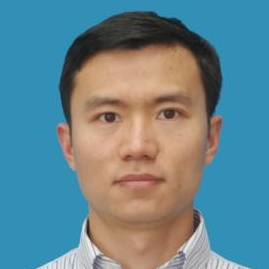Advancements in Nuclear Energy Technology
A special issue of Energies (ISSN 1996-1073). This special issue belongs to the section "B4: Nuclear Energy".
Deadline for manuscript submissions: 31 July 2024 | Viewed by 948
Special Issue Editors
Interests: nuclear reactor safety; advanced nuclear systems; monte carlo; radiation transport; radiation protection
Special Issues, Collections and Topics in MDPI journals
Interests: advanced nuclear systems; monte carlo; particle transport; fusion neutronics; radiation protection; multi-physical coupling
Special Issues, Collections and Topics in MDPI journals
Interests: monte carlo; nuclear reactor physics; high performance computing; machine learning; applied mathematics
Special Issues, Collections and Topics in MDPI journals
Special Issue Information
Dear Colleagues,
Nuclear energy has been one of the key low-carbon-emission sources of energy. As the world continues to grapple with climate change, it is imperative that we explore and develop new advancements in nuclear energy technology to provide efficient, clean, and safe energy solutions. In this context, we invite researchers, scientists, and industry experts to contribute to our upcoming Special Issue on the "Advancements in Nuclear Energy Technology".
This Special Issue aims to showcase the latest breakthroughs, innovations, and technological advancements in the field of nuclear energy, covering various topics, such as nuclear reactor design, modeling and simulation, operation and maintenance, nuclear fuel cycle optimization, safety and security, waste management, the integration of nuclear with other renewable energy sources, and so on.
We welcome the submission of original research articles, review papers, and case studies that can provide valuable insights into the current state and future prospects of nuclear energy technology.
The development and deployment of advanced nuclear energy technologies will play a crucial role in the global transition towards a carbon neutrality and sustainable energy future. Join us in this effort to promote the advancement of nuclear energy technology and contribute to a greener and more sustainable future for all.
Dr. Jingang Liang
Dr. Shichang Liu
Dr. Zhaoyuan Liu
Guest Editors
Manuscript Submission Information
Manuscripts should be submitted online at www.mdpi.com by registering and logging in to this website. Once you are registered, click here to go to the submission form. Manuscripts can be submitted until the deadline. All submissions that pass pre-check are peer-reviewed. Accepted papers will be published continuously in the journal (as soon as accepted) and will be listed together on the special issue website. Research articles, review articles as well as short communications are invited. For planned papers, a title and short abstract (about 100 words) can be sent to the Editorial Office for announcement on this website.
Submitted manuscripts should not have been published previously, nor be under consideration for publication elsewhere (except conference proceedings papers). All manuscripts are thoroughly refereed through a single-blind peer-review process. A guide for authors and other relevant information for submission of manuscripts is available on the Instructions for Authors page. Energies is an international peer-reviewed open access semimonthly journal published by MDPI.
Please visit the Instructions for Authors page before submitting a manuscript. The Article Processing Charge (APC) for publication in this open access journal is 2600 CHF (Swiss Francs). Submitted papers should be well formatted and use good English. Authors may use MDPI's English editing service prior to publication or during author revisions.
Keywords
- advanced nuclear reactors
- hybrid nuclear systems
- design and operation
- nuclear artificial intelligence
- modeling and simulation
- nuclear reactor physics
- thermal hydraulics
- multiphysics analysis
- nuclear safety and security
- nuclear fuels
- radioactive waste management







